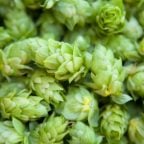Many small-town breweries are woven into the fabric of their surroundings. They're gathering places for tourists and locals alike, representing Americana at its finest.
The post Live and Brew in a Small Town appeared first on CraftBeer.com.
Many small-town breweries are woven into the fabric of their surroundings. They're gathering places for tourists and locals alike, representing Americana at its finest.
The post Live and Brew in a Small Town appeared first on CraftBeer.com.
At Iowa's rapidly expanding Big Grove Brewery, the goal isn’t to make money today, but to make people come back tomorrow.
The post Big Grove’s Big Plans: Give Iowa a Try appeared first on CraftBeer.com.
There’s an old saying in winemaking that it takes a lot of great beer to make great wine. But in the brewing industry, it takes plenty of great tacos to make great beer.
The post Tacos & Beer: Fueling the Yakima Valley’s Hop Harvest appeared first on CraftBeer.com.
The fourth-largest producer of hops in the U.S., Michigan has become a unique test subject for the future of American hop production—and craft beer itself.
The post The New Nobles: Michigan Hops appeared first on CraftBeer.com.
The Chair has become the shaker pint of taproom furniture: ubiquitous, affordable, stackable, easy to clean, and largely unloved.
The post Buns of Steel: Why Every Brewery Taproom Has *That* Chair appeared first on CraftBeer.com.
A new wave of Asian American brewers is putting their heritage at the heart of their craft.
The post Redefining Craft Beer: Asian Americans Brewing Up Heritage appeared first on CraftBeer.com.
To be a part of the craft beer scene in New Orleans is to be a part of the city’s vibrant culture of culinary delights, thoughtful drinks, deeply rooted music traditions, and an emphasis on socializing within the community.
The post Beer in a Cocktail Town: How Craft Breweries Have Enriched NOLA appeared first on CraftBeer.com.
 This week I examine a group of US hops from the Pacific Northwest. These American hops form the heart of the US Craft Beer revolution and are widely used in American Pale Ale, and the wide array of India Pale Ales (IPAs) that now dominate Craft Beer production in the US. The Pacific Northwest Hops […]
This week I examine a group of US hops from the Pacific Northwest. These American hops form the heart of the US Craft Beer revolution and are widely used in American Pale Ale, and the wide array of India Pale Ales (IPAs) that now dominate Craft Beer production in the US. The Pacific Northwest Hops […] The United States is home to more than 18,000 islands, and for travel lovers, many are worth adding to a list of must-see destinations. Luckily for craft beer enthusiasts, there are breweries located on several of these islands.
The post These 19 Breweries Are on U.S. Islands appeared first on CraftBeer.com.
Any beer can be a camping beer, of course, but here are some suggestions for cooling down after a hike or warming up around the firepit.
The post The Great Outdoors: Beers to Enjoy while Camping appeared first on CraftBeer.com.
Back Home Beer brings to life Iranian and Middle Eastern ingredients and flavors, and celebrates the communal joy of brewing and bonding with one another over beer.
The post Transporting Beer Drinkers ‘Back Home’ with Middle Eastern Flair appeared first on CraftBeer.com.
American craft breweries are known for their ability to strengthen community connections. These three breweries are case in point.
The post Beyond the Beer: Three Breweries Serving Their Communities appeared first on CraftBeer.com.
Architect and author Neil Ginty talks about some of his favorite breweries that give you a front row seat to the brewing process.
The post Form & Function: Brewery Visits with an Architect appeared first on CraftBeer.com.
From brewery hotels to campgrounds, quirky Airbnbs to luxurious resorts, this is your guide to planning a craft beer weekend getaway.
The post AirbnBeers: Breweries with Hotels, Inns, Camping and More appeared first on CraftBeer.com.
The roots of American craft beer extend throughout the nation, but the bines of the movement are clearly embedded in the Pacific Northwest.
The post 5 Pacific Northwest Breweries to Please Any Palate appeared first on CraftBeer.com.
(DENVER, CO) — The Great American Beer Festival (GABF) competition drew in 9,680 entries from 2,192 breweries from across the United States, Washington D.C. and Puerto Rico. Today the Colorado Brewers Guild (CBG) is proudly honoring the 21 medals awarded to Colorado breweries, 20 of which are independent craft breweries, at the 2021 GABF competition. […]
The post Colorado Brewers Collect 21 Medals at This Years Great American Beer Festival Competition appeared first on The Full Pint - Craft Beer News.
272 medals awarded to 240 breweries in world’s most prestigious professional beer competition Boulder, Colo. • October 16, 2020 — The Brewers Association (BA) awarded 272 medals* to 240 breweries across the country during the 2020 Great American Beer Festival (GABF) competition awards ceremony. The best beers in 91 beer categories covering 170 different beer styles (including all subcategories) were awarded gold, silver, and bronze medals during a virtual ceremony hosted on The Brewing Network. Judges for the 34th edition of […]
The post Winners of 2020 Great American Beer Festival Competition Revealed During First-Ever Virtual Ceremony appeared first on CraftBeer.com.
For us homebrewers that enter a competition sanctioned by the Beer Judge Certification Program (BJCP), the goal is clear – we want feedback on our brews from trained tasters. And, if we win an award, we want to strut. As homebrewers progress to professional brewing, little changes in regard to competition goals. Professional brewers still […]
The post The Untold Benefits of Award-Winning Beer appeared first on CraftBeer.com.